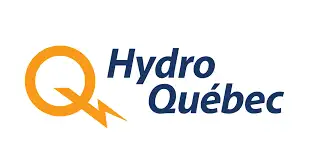Edison International spends billions on renewables
By Reuters
Protective Relay Training - Basic
Our customized live online or in‑person group training can be delivered to your staff at your location.

- Live Online
- 12 hours Instructor-led
- Group Training Available
"We have focused on renewables particularly since 2005. That is where the growth in generation has been," Craver said.
Edison International, of Rosemead, California, operates through two subsidiaries — Southern California Edison (SCE), a regulated electric utility in central and Southern California, and Edison Mission Group (EMG), a competitive power generator.
SCE is one of the largest utilities in the nation, serving 13 million Californians. It expects to invest $20 billion over the next five years to, among other things, help bring more clean and renewable power and energy efficiencies to consumers.
"At SCE, we plan to spend most of that money on the wires-side of the business — transmission, distribution and smart meters — and a little on generation, including renewable solar generation," Craver said.
The wires, including a $1.7 billion smart meter program and the planned Devers-Colorado River transmission line, will help consumers use power more efficiently and meet California's renewable mandates.
California requires 20 percent of power to come from renewable sources by 2010 even though renewables are more expensive than burning carbon-producing fossil fuels. Should state and governments eventually put a price on permits to release carbon into the atmosphere, renewables are expected to still be more expensive than fossil fuels.
"We get about 16 percent of our power from renewables now but have contracts for other generation that has not been built yet because the transmission is not there to move it," Craver said, noting the state has a flexible compliance program that allows utilities to borrow from future years.
The Devers line, expected to cost more than $500 million and enter service in 2013, will allow SCE to move another 1,200 megawatts to customers from new power sources like the solar projects planned in the southeast California deserts.
SCE also planned to spend about $900 million to install about 250 MW of solar panels on commercial building rooftops that would feed power directly into the distribution system without the need for costly transmission projects.
Meanwhile, Edison Mission Group is growing by planting wind farms across the United States.
EMG operates more than 10,000 MW of generation in the United States, including some 1,200 MW of wind power.
EMG is building another 390 MW of wind power in Illinois and Texas and has roughly 5,000 MW of wind projects at various stages of development in 16 states.
But EMG still produces most of its power by burning coal - the most carbon-intensive fuel.
Half of the nation's power is produced by coal-fired plants. To combat global warming, the United States wants to reduce greenhouse gas emissions, like carbon dioxide, by putting a price on carbon.
Craver said Edison International supports "reasonable federal carbon legislation" that provides "certainty" on the cost of producing CO2.
Over the last decade, EMG has invested hundreds of millions in its coal plants in Illinois and Pennsylvania to reduce emissions of mercury, nitrogen oxide and sulfur dioxide.
But to achieve further emissions reductions to meet state and federal regulations, EMG must spend billions more on equipment and emissions credits, retire the plants or some combination of both.
Craver could not say what EMG would do, noting it would cost an estimated $150 million to $200 million to control for nitrogen oxide to meet Illinois rules that take effect in 2012.
As for sulfur dioxide, Craver said EMG was still evaluating the type of scrubber technology needed to comply with Illinois rules that step down emissions from 2013 to 2018.
Standard and Poor's estimated the Illinois scrubbers could cost about $2 billion.
Before spending billions to upgrade emissions control equipment, Craver said EMG wants to see what carbon reduction mandates the federal government imposes.











